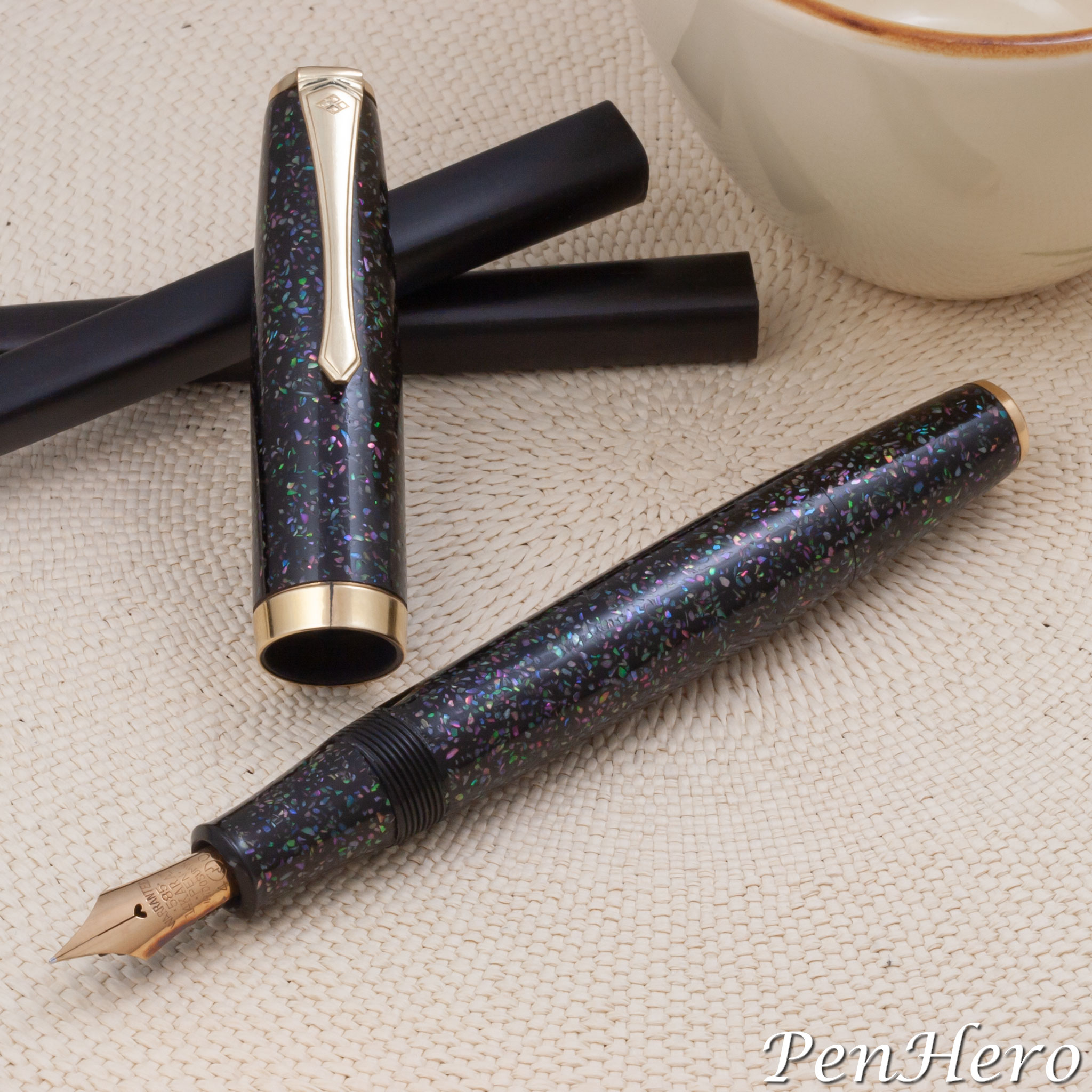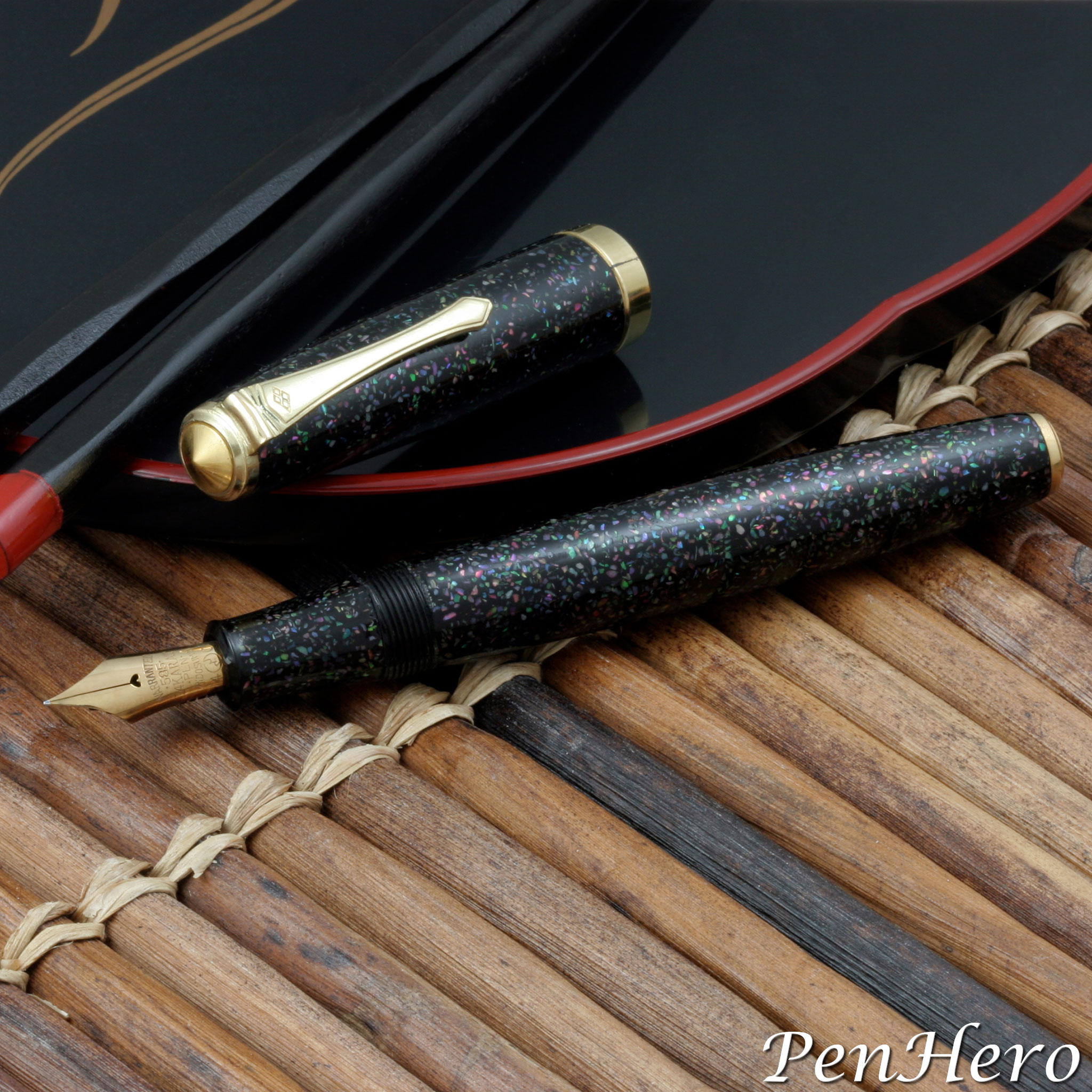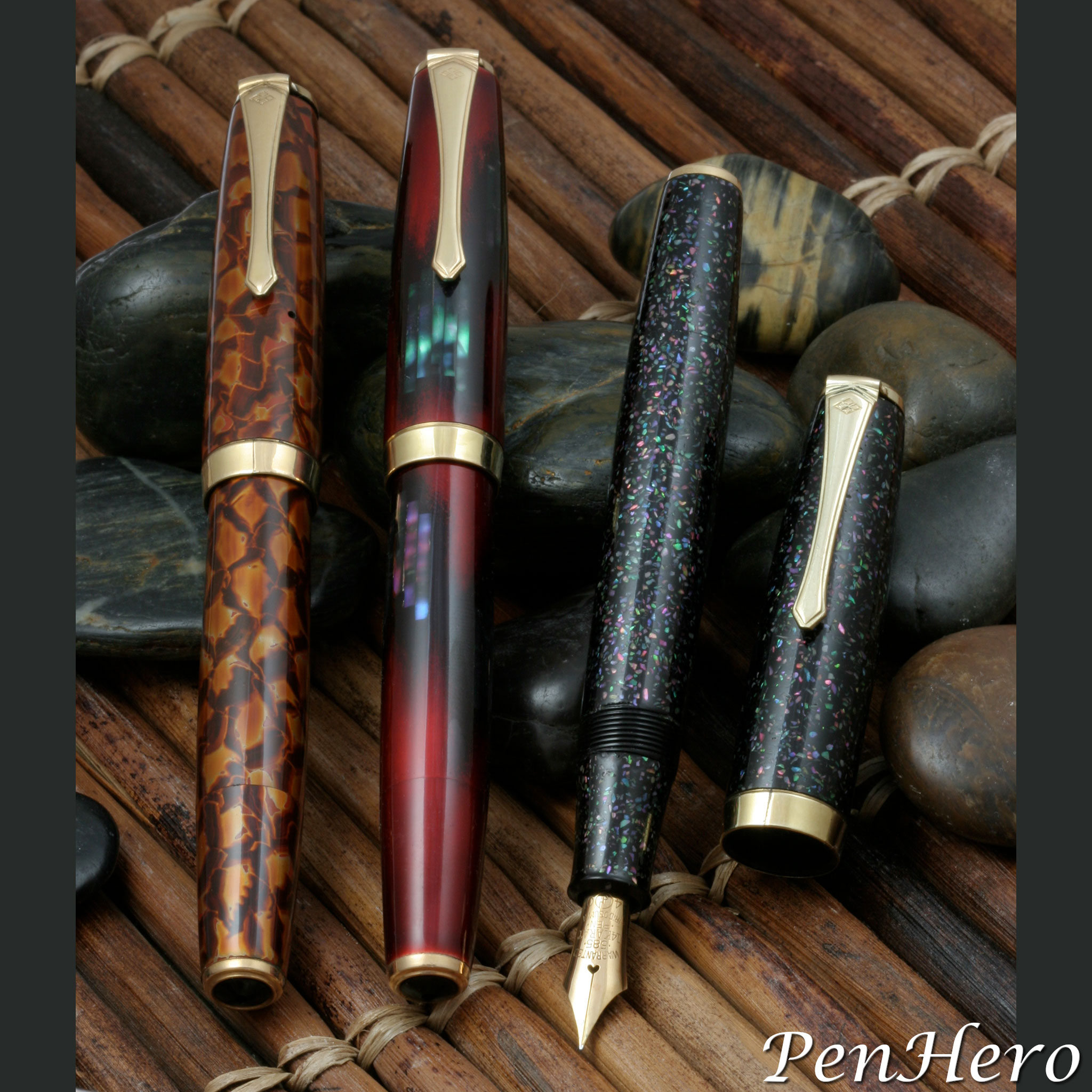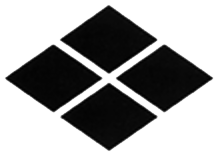Yotubishi Raden Decorated Pen c. 1957
by Jim Mamoulides, June 21, 2024
 Yotubishi Raden decorated pen c. 1957
Yotubishi Raden decorated pen c. 1957
A Sea of Stars
Raden is a decorative technique that uses inlaid or overlaid natural mother-of-pearl material. The pieces can be different sizes and shapes, cut and placed to create specific images, such as flowers, or free form effects, and patterns. According to Fountain Pens of Japan, ra means “conch shell” and den means “studded material.” A variety of mother-of-pearl materials can be used to achieve a range of colors in the artwork. “The artist cuts small flat pearl pieces to fit exactly into the figure and pastes them onto the surface.” The artwork is applied using many small cut outs in the surface and then gluing in the small shell fragments. The surface is then covered with coats of clear urushi lacquer and then sanded and polished. This style of Raden decoration can also be seen on modern Japanese pens, such as the Platinum Izumo Raden Galaxy fountain pen.
On this c. 1957 Yotsubishi ink shut-off fountain pen, the Raden decoration uses a variety of colored, crushed abalone shell pieces including various shades of purple, pink, green and gold, that are inlaid into the surface of the dark urushi coated lacquer cap, barrel and nib section. The clip has the Yotsubishi four diamond logo stamped at the clip top. The cap band is rolled gold. The gold nib is stamped WARRANTED over 585 over 14KARAT over PEN over IRIDOSUMIN over the JIS mark flanked with 4 and 0. The JIS number cannot be seen but the stamping is identical to a nib on another Yotsubishi Raden decorated pen, so it may be marked 4622. Two balance shaped pens with the same Raden pearl chips inlay design are shown in Fountain Pens of Japan on page 101, a c. 1940 eye-dropper filler, and on page 112, a 1957 Ishi-Shoten catalog page. The catalog page caption says there were over twenty pearl inlay designs available at that time.
 Yotubishi Raden decorated pen c. 1957
Yotubishi Raden decorated pen c. 1957
The Japan Industrial Standard (JIS) marking for fountain pen nibs was instituted in 1951 and gold nibs intended for export were required to have the JIS mark in 1952. Gold nibs intended for domestic sale were required to have the JIS mark in 1953. Nibs are stamped with the JIS mark and a four digit number indicating the maker. The JIS nib number on this nib cannot be read because it is set deeply in the section. If it is 4622, it would be for Kabutogi-Seisaksho Tabata by Ginjiro Kabutogi, who had the brand Seilon, according to the list of JIS numbers in Fountain Pens of Japan.
Eyedropper pens with an ink shut-off valve at the end of the barrel fill like any other eyedropper type. First the nib section is unscrewed from the barrel and then ink is dripped into the barrel using a bulb eyedropper. The knob at the end of the barrel, seen by the faint seam near the bottom, is attached to a long rod that extends inside the barrel up to the base of the feed in the nib section. When the knob is screwed flush with the end of the barrel, the rod cuts off ink flow to the feed, becoming an ink shut off valve, making the pen safe to pocket or put down. To write, the knob must be unscrewed slightly, pulling the stopper back from the base of the feed, which allows ink to flow to the nib.
Yotsubishi was a brand of Ishi-Shoten, also known as Ishi & Co. The company was established in Tokyo in 1925 by pen maker Yoshinosuke Ishii. Following the lead of Pilot, who began making maki-e pens in the 1920s, Ishi-Shoten, though a small company with initially as few as ten workers, began competing by making less expensive but fine maki-e pens. Ishi-Shoten used the four diamond trademark, yotsubishi in Japanese. The mark can be found on the clip top on most pens, though sometimes on the cap band. In reference materials, on the pens, and in catalogs, there are three spellings, Yotsubishi, Yotubisi, and Yotubishi, all pronounced the same. Fountain Pens of Japan makes the distinction that the company name became Ishi-Shoten Yotsubishi, but the brand name was Yotubishi. The company ceased operations in 1984.
 Yotubishi Raden tanzaku decorated pen c. 1957 (center) with Yotubishi free pattern maki-e decorated pen (left) and Yotubishi Raden decorated pen (right)
Yotubishi Raden tanzaku decorated pen c. 1957 (center) with Yotubishi free pattern maki-e decorated pen (left) and Yotubishi Raden decorated pen (right)
Looking at this pen is like looking up into the night sky and seeing a galaxy of colorful shimmering stars, that are revealed as tiny iridescent shell pieces. Another fine and beautiful pen by Ishi-Shoten Yotsubishi. The pen was not filled or dipped, as it was on loan for photos, but the nib feels very smooth from dry write testing.
Another example that shows the collectability of Yotsubishi art pens made in the 1950s. They are very uncommon in the United States and this one would be a prized pen in any collection.
References
“Collecting Japanese Pens” by Stan Klemanowicz, The Pennant, Winter 2006, published by the Pen Collectors of America
Fountain Pens of Japan by Andreas Lambrou and Masamichi Sunami, © 2012 Andreas Lambrou Publishers, Epping, Essex, United Kingdom, pages 101-118
New Product Specifications Izumo Raden “Galaxy”, Copyright © 2020 Platinum Pen Co.,Ltd.
Interact
Comments on this article may be sent to the author, Jim Mamoulides


